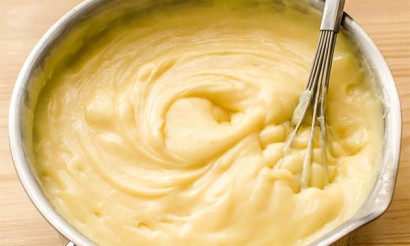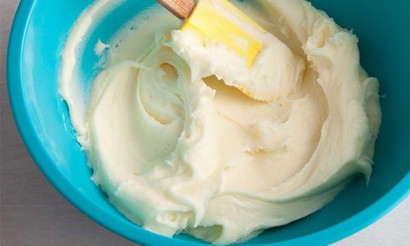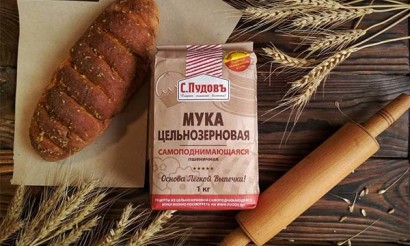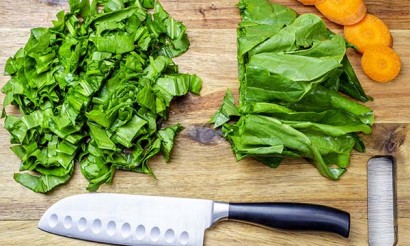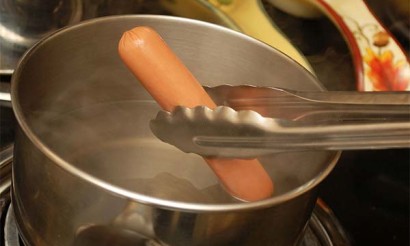Can I freeze cottage cheese?
- Is it possible to freeze curd in the freezer
- How to freeze curd properly
- Portion the cottage cheese
- Label
- Use a special container for freezing
- Grind the curd
- Check the freshness of the product.
- How long can you keep curd in the freezer
- Is it possible to freeze curd cakes
- What curd products are better not to freeze
- How to defrost curd properly
- In cool water
- In the fridge
- Using frozen cottage cheese
Frozen cottage cheese, whose popularity has skyrocketed in recent decades due to the HVA movement, has become an integral part of the diet not only of the athlete or countryman, but also of the average city dweller. For breakfast, everyone wants a tasty source of calcium, protein, vitamin A and other essential micronutrients and vitamins. But is it possible for everyone to serve it fresh to the table? The answer is short and simple - of course not. And to buy a few kilos is not profitable due to the short term nature of the product. After all, natural farmer cottage cheese is stored for no more than 3 days, every day losing its consumer and useful properties, becoming a perfect medium for the development of unfavorable microflora. Willy-nilly you begin to wonder - is it possible to freeze it like meat? What will it be after defrosting - as good as fresh? In this article we will help to understand and answer them.
Is it possible to freeze cottage cheese in the freezer
The freezer is undoubtedly one of the best creations of mankind, which allows you to keep food alive for a long time. And in fact, you can freeze anything you want. But keep in mind that when you freeze a product, it loses some of its properties, from its taste to its physical properties (like weight). Cottage cheese is no exception to the rule, so feel free to stock up on it. After all, we store at the store for frozen pancakes and cottage cheese dumplings.
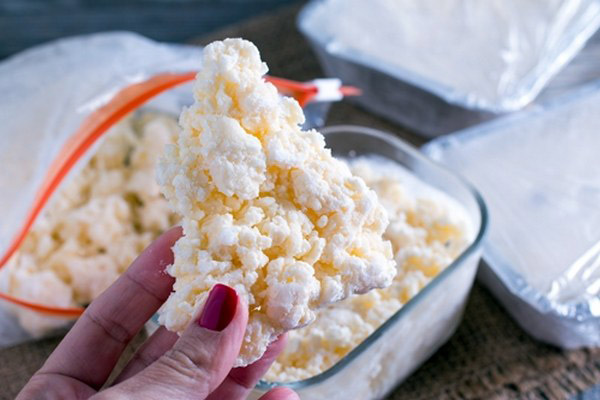
Freezing cottage cheese has some peculiarities. The most important has to do with the percentage of milk fat in it. It may be strange, but the less of it, the slower the process of freezing sour milk product. Be sure to take this into account when buying and give preference to cottage cheese with a high fat content. After all, a high freezing rate will preserve most of the qualities. By the way, fat-free and low-fat cottage cheese after defrosting can become liquid, lose its texture and flavor - factors that again play to the advantage of fatty.
It's important to realize that after storage in the freezer, cottage cheese will not look perfect. If you are used to getting more aesthetic pleasure from food, then eating fermented dairy product in a defrosted form, for example, with sour cream and sugar is not a suitable option. But it is ideal for preparing a variety of heat-treated dishes - casseroles, cheese cakes, waffles and more. As a rule, the structure of cottage cheese in such products is not particularly important, since it still undergoes changes in the process of cooking.
How to properly freeze cottage cheese
So, we found out that even cottage cheese can be subjected to freezing. But how to perform this procedure in order to leave the product with maximum consumer properties? Let's look at the main requirements to follow in order to achieve the desired goal.
Divide the cottage cheese into portions
Suppose we bought 1 kg of product in a bag and froze it in the same container whole, and a couple of days later decided to try 200 grams for breakfast. And to get that amount, we have to defrost the whole bag. And here we have the desired glass of cottage cheese, but what to do with the rest - freeze again? We can't, otherwise it will go bad when defrosting it again. It remains to consume 1 kg whole.
To avoid such a mishap, before freezing, think about how much you need on average to use. Usually the amount for consumption and for use in recipe dishes is 200 g, so the best option is to distribute exactly those proportions in the container for freezing. You can always defrost a larger quantity as needed by taking out two or more bags.
Label
In order not to forget where the cottage cheese is "late" and "early" frozen, for proper alternation and compliance with the principle of warehouse logistics (as strange as it may sound) - FIFO (First In, First Out, which means "first in, first out"), mark the container with the product with the date of packaging. Agree, sometimes it's hard to remember how long ago and when we froze our own packaged meat. And with cottage cheese it will be the same, but with one exception - even in frozen form, compared to other "residents" of the freezer, it can be classified as perishable.
This advice will avoid the unpleasant sour surprise in the form of cottage cheese "seemingly packed a week ago" and will help you keep track of how soon you need to consume the fermented dairy product and which of the bags you should take first.
Use a special container for freezing
Pay attention to what we store the frozen cheese in - as a rule, it is a cellophane bag, in which we were packaged by caring sellers when purchasing the product. Harsh storage conditions in the frozen form over time lead to "burns" of cottage cheese in places of contact with the walls of the freezer - thin cellophane does not provide the necessary preservation, and as a result we get a dried out consistency.
An airtight container and a special bag for freezing provide reliable protection, so that after defrosting the curd consistency is preserved as close to the original as possible. The principle is to remove air from the container, in other words, it will be airtight. The absence of any gases in the container and the bag prevents the formation of ice crystals on the product, which are the cause of the previously mentioned "cold burns".
Grind the cottage cheese
And that's not a typo. It's really worth crushing the cottage cheese, because it tends to clump together in large lumps, which freeze more slowly. And it is these, over time, will be susceptible to rapid deterioration. Don't be lazy and crumble the cottage cheese lumps into individual clumps.
Check the freshness of the product.
For freezing, you should use cottage cheese that is barely freshly made. By freezing the product on the last day of its shelf life, you also freeze all that putrefactive microflora that has begun to develop, and the number of useful bifidobacteria is already reduced to zero by this time.
To summarize, let's highlight the basic materials for doing freezing properly - bags with a slider lock, sealed plastic containers of small size, scales and a marker.
How long can you keep cottage cheese in the freezer
In chilled form, natural farm cottage cheese is recommended to store no more than 3 days. Current production technologies, in the form of additives and packaging methods, make it possible to extend this period to two weeks, but even they do not compare with storage in the freezer.
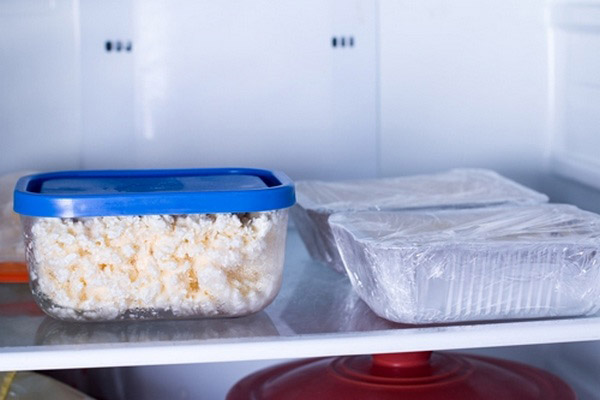
The storage time of cottage cheese in the freezer is affected by the temperature inside it - from minus 10 to minus 18 degrees Celsius. This will allow you to enjoy the dairy purchase for three weeks, while deep freezing from minus 18 and below (which, by the way, is the most optimal temperature for storing all dairy products) - from 2 to 6 months (depends on the fat content of cottage cheese - the more fat content, the less term). The latter temperatures, which is not in dispute, are the best.
Is it possible to freeze cheesecakes from cottage cheese
We freeze dumplings, cutlets and vegetable mixes - you just need to defrost, heat treatment and the product is ready. And if we can freeze the cottage cheese itself, then no one forbids doing it with just made cheesecakes.
Cheesecakes are some kind of curd patties with the addition of eggs, flour/cereal, sugar, and salt. These components are harmless and keep in their original form longer than cottage cheese. And, by the way, the sale of such frozen semi-finished products and thereby simplifying life is already becoming widespread. But it is much nicer to eat cheesecakes made with our own hands, and the opportunity to get them at any time and spend time only for frying is a nice addition.
The principle of freezing cheesecakes is similar to that of meat cutlets: first, they are sent to the freezer for two hours in a plate or on a cutting board (depending on where you put the curd mass made) - at this stage we fix their shape, so that during further storage the cheesecakes do not turn into an unformed mass.
After two hours, put the frozen cheesecakes in a container or in a bag for freezing - the choice of containers is guided by the same reasons that were noted for freezing curd. And remember about the packed quantity - do not put in one bag more than you can eat at once. Storage time is from 3 weeks to 2 months, depending on the temperature maintained in the chamber.
Cheesecakes are prepared after defrosting according to the same principle as if they were cooked immediately before frying. The only difference will be the frying time on each side - it will increase to 5 minutes, since the main component of cheesecakes after defrosting releases more moisture than in the fresh form.
You might as well freeze foods in which cottage cheese is the filling - dumplings, pancakes, and so on.
What curd products are better not to freeze
As a general rule, any curd product can be frozen (even pre-made curd casserole). But you must remember that after defrosting, the product can lose so much of its once appealing appearance that the idea that it is spoiled and unfit for consumption will immediately stick in your mind.
Cheese curd falls into such a category. The already shredded structure will turn into mush when defrosted due to the release of moisture. Now imagine that the cheese cake was covered with chocolate. Agree, you do not want to eat such a thing. The same applies to the curd mass. When defrosting, all the liquid will be absorbed back, and the consistency will be liquid. If you do decide to experiment and the result is depressing, you can always use such masses in a curd casserole.
How to properly defrost cottage cheese
So you decided to cook something and took out the previously frozen curd. You have several ways to defrost it:
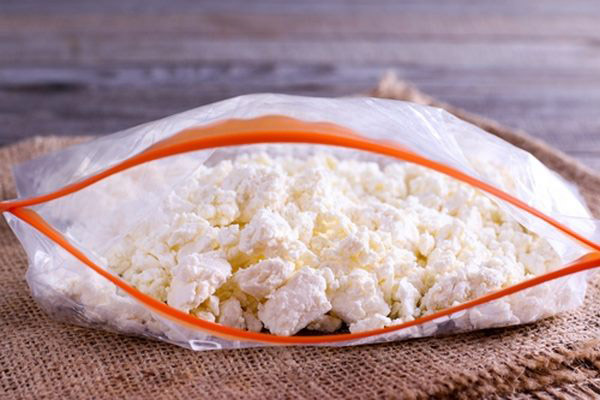
In cool water.
This method may be unfamiliar to some, but some housewives use it quite often. In a couple of hours you can get thawed curd with minimal losses at the end of the process. To do this, it is enough to put a bag with cottage cheese in a so-called cold bath (the water should completely cover the product).
Do not use hot water, even if you really want to speed up defrosting. You should not do this for two reasons: the first is the loss of taste, the second is the contamination of the product.
In the refrigerator
The most widely used and actually traditional way of defrosting. Simply put the container with cottage cheese in the refrigerator overnight, and it will be defrosted by morning. The decisive role will be played by the amount of defrosted product - the larger its volume, the longer the process will take. Our attempted proportion planning will help here - two 200g bags will defrost faster than a whole frozen 400g piece of cottage cheese.
When using these two methods, don't forget to drain off the excess liquid resulting from defrosting. This operation will greatly improve the quality of the curd dish.
Using frozen cottage cheese
The fastest way of all presented. But it is worth remembering that it is not suitable for all curd dishes. Frozen sour milk grains, added in the process of cooking, will safely accept soups or vegetable stews, whose recipe contains cottage cheese. You just need to add a few minutes to the total cooking time and stir occasionally so that the curd spreads evenly throughout the dish.
Thawed cottage cheese should be used within 24 hours. Do not forget to evaluate the smell and color of the product. If you follow all the rules, it will not differ in the above parameters from fresh - it is the same snow-white and with a bright curd flavor without excessive acidity.
A nice bonus for lovers of delicious and healthy food - forget about your worries that freezing kills all the nutrients in foods. Food studies have shown that all properties are preserved for up to 3 months.
«Important: All information on this site is provided for informational purposes only. information on this site is for informational purposes only. Ask your health care professional before taking any recommendations. health care professionals. Neither the editors nor the authors shall be liable for any possible harm caused by materials."

